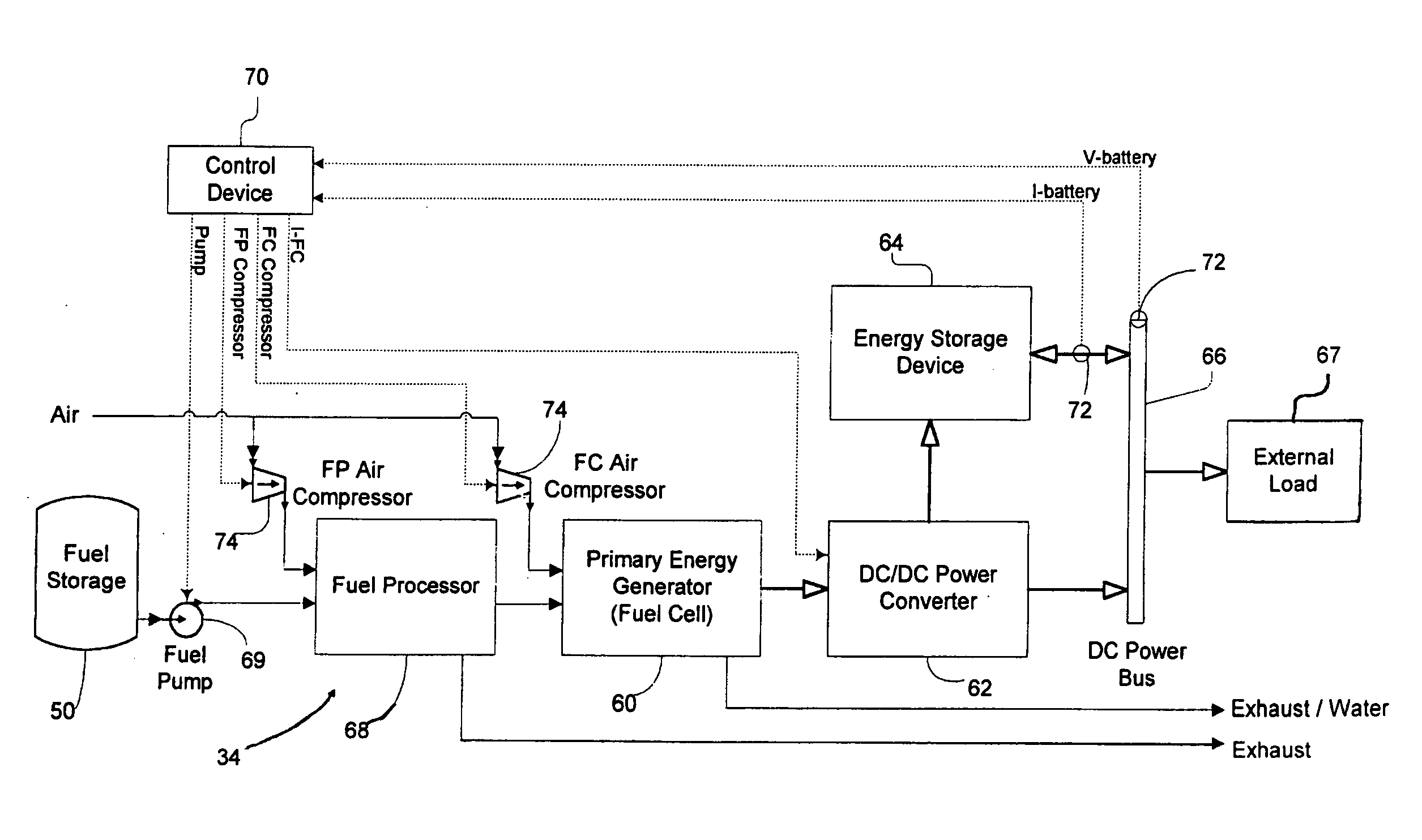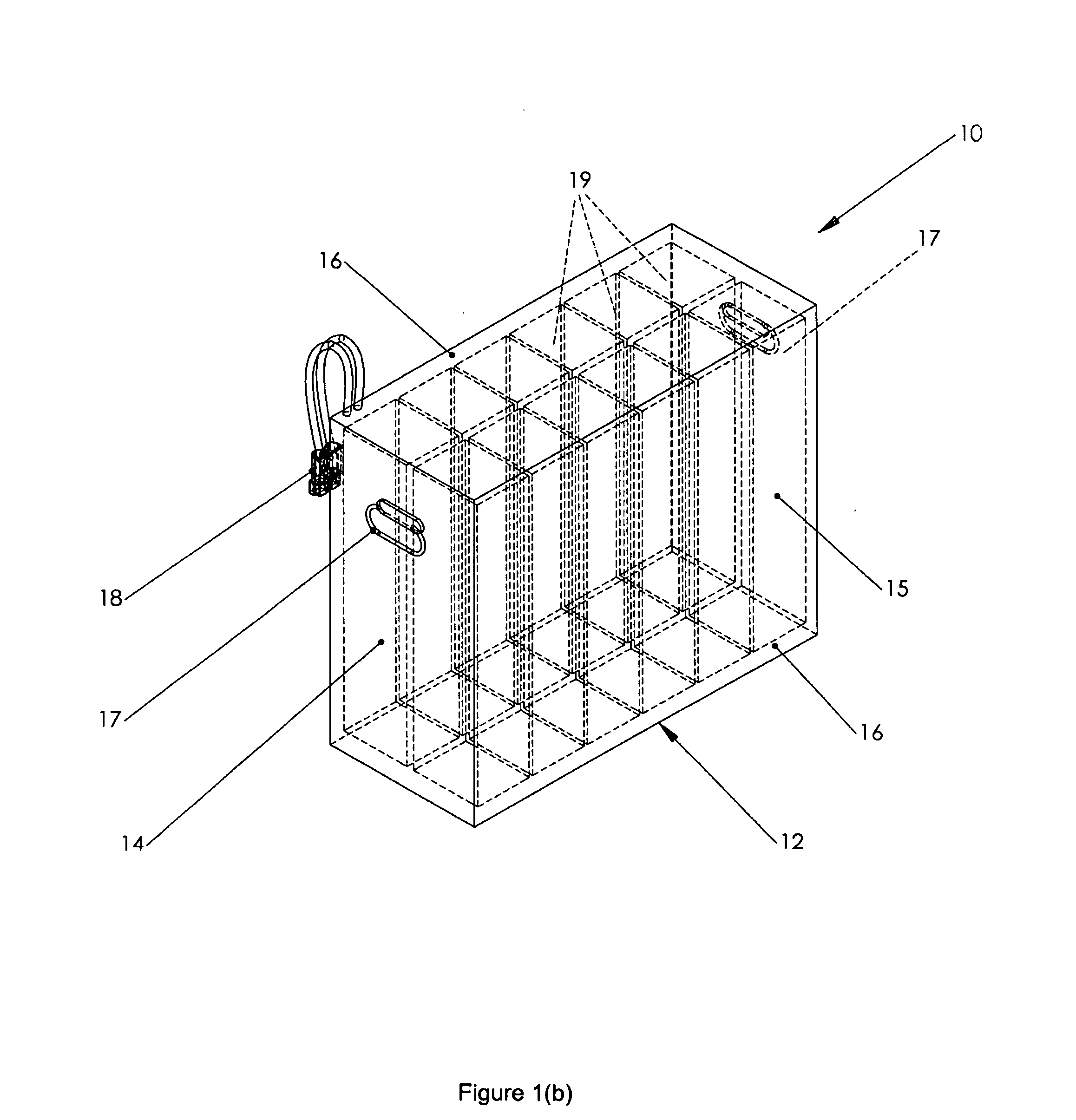Hybrid power supply apparatus for battery replacement applications
a power supply apparatus and battery technology, applied in the direction of capacitor propulsion, cell components, battery/cell propulsion, etc., can solve the problems of high cost, frequent recharge of conventional batteries, and serious shortcomings of all conventional battery systems designed for low-power vehicular applications, and achieve precise thermal regulation, high energy density, and extended service life
- Summary
- Abstract
- Description
- Claims
- Application Information
AI Technical Summary
Benefits of technology
Problems solved by technology
Method used
Image
Examples
Embodiment Construction
[0040] A conventional industrial or "traction" battery 10 for a forklift truck 20 is shown in FIGS. 1(a) and 1(b). Battery 10 includes a boxshaped housing 12 having opposed end faces 14, side faces 15 and top and bottom faces 16. As shown in FIG. 1(a), truck 20 typically includes a main body 22 mounted on wheels 24 and having a fork lift mechanism 26 attached. The main body 22 has a cavity or battery receptacle tray 28 which is sized and shaped to removably receive one battery 10. In the example shown, tray 28 is rectangular in shape and is located in the center of the main vehicle body 22. However, the location and dimensions of tray 28 will vary depending on the specific truck manufacturer, model and application. By way of example, pallet trucks have maximum allowable battery tray dimensions of 31"L.times.13"W.times.32"H (the height is variable depending upon the battery capacity). Narrow aisle lift trucks vary to a greater extent, but a typical battery tray 28, for a 36 volt DC m...
PUM
| Property | Measurement | Unit |
|---|---|---|
| power | aaaaa | aaaaa |
| power | aaaaa | aaaaa |
| temperature | aaaaa | aaaaa |
Abstract
Description
Claims
Application Information
 Login to View More
Login to View More - R&D
- Intellectual Property
- Life Sciences
- Materials
- Tech Scout
- Unparalleled Data Quality
- Higher Quality Content
- 60% Fewer Hallucinations
Browse by: Latest US Patents, China's latest patents, Technical Efficacy Thesaurus, Application Domain, Technology Topic, Popular Technical Reports.
© 2025 PatSnap. All rights reserved.Legal|Privacy policy|Modern Slavery Act Transparency Statement|Sitemap|About US| Contact US: help@patsnap.com



